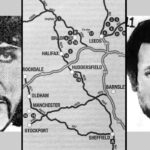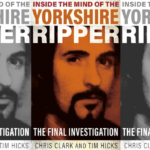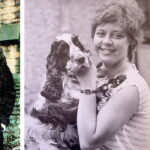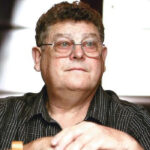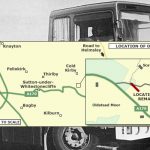“Hope”: Another Important Witness
by CHRIS CLARK & TIM HICKS
~~~~~
Introduction: “Hope”
For some time now, the NYE has been covering “Yorkshire Ripper” Peter Sutcliffe and his potential involvement in many more crimes than he was convicted of, including attacks in North Yorkshire.
In particular, when the authors started publishing Chris’s antecedent investigation into Sutcliffe, they were hopeful they would be able to progress one of the great murder mysteries of Yorkshire, “The Nude in the Nettles” murder. Which the authors assessed had probably been perpetrated by “Yorkshire Ripper” Peter Sutcliffe.
The authors have recently worked with the Yorkshire Post on a series of articles on this crime, which can be accessed here.
To help generate public interest, the authors have named the victim “Hope”.
Another witness comes forward, giving important new information on Sutcliffe’s modus operandi
In all of our articles, the authors have always included an appeal for information and this has produced an important new witness. Child D has now come forward to the NYE given this account of an encounter she and another child (Child E) had with Sutcliffe:
“My friend and I both female I got a lift from Peter Sutcliffe in 1974 we only realised years later.
We had been to see a Mott the Hoople concert and spent our fare back to Wakefield so we were hitching.
He picked us up after the gig, in Bradford on Wakefield Road so sometime after 11 pm and he and took us all the way to and dropped us off at the Redbeck cafe an all-night cafe on Doncaster Rd in Wakefield.
He had an odd laugh, said his name was Pete and that he used to work nights in a TV factory so didn’t sleep well. He gave us money for a cup of tea at the Redbeck but didn’t come in. We did a runner out of the back because he was strange
At 15 years old the pair of us with no concept of danger.
Our gig was 7th November we were so close then. 15 years old the pair of us with no concept of danger
No idea about the car because we were 15.”
The authors have reviewed this evidence. We asses that this is an accurate account and that the driver who picked up Child D and Child E was Sutcliffe. The reasons for this are:
- Sutcliffe used to work at Bairds Television Factor assembling Televisions. After Bairds asked him to go on the road as a salesman he left in April 1973 and immediately began a job doing permanent night shift at the Britannia Works of Anderton International as a furnace-man. So the description he gave of his work fits Sutcliffe perfectly.
- Child D stated that Queen was on the line-up for the Mott the Hoople concert and this tallies with their concert on Wednesday the 6th of November 1974 at St Georges Hall, Bradford. The support band was Hustler. So this verifies the date of the encounter in Bradford, which is an area Sutcliffe was known to frequent.
- Child D’s account is corroborated by a very similar account given by Ms Kristina Rose (Child A). Kristina and another girl (Child B) were abducted by Sutcliffe in 1977 or 1978 in his lorry. Then taken from Hammersmith in London to Sunderland. The evidence of Kristina Rose can be accessed in full here.
- Another witness Child C has confirmed that Sutcliffe accosted her from his lorry in 1980 when she was a schoolgirl in Leicester. Child C narrates her story in her own words below:
“I happened to be watching a documentary this evening on the Yorkshire Ripper. For what it’s worth it wanted to let you know that I believe I had an encounter with Peter Sutcliffe in what I believe would have been 1980 on a road called Checketts Road in Leicester. I vividly remember that day because he scared me to no end.
His truck was parked on the opposite side to me and he crossed over to my side of the Road. I was on my way home from school and I remember the time to be around 3.40 pm as he asked me what time it was. He then asked me if I was free which scared me so I said ‘no’ and started walking faster. I looked behind and he was following me. I started running and he also started running right up to my street. Luckily he didn’t see me go into the house.
I peeked through the window and saw him walk all the way to the end of my street and back. I was terrified. I recognised him from the pic in the papers following his arrest a year later. I did not report this as I did not want to be associated with him. I’m not sure whether this disclosure matters at all but I had to let my story and him out of my system.
After watching the documentary last night, I Googled to check whether it was ever proven that he went past Leicester during his killing spree. Surprisingly I came across the Leicester Mercury article which I have just realised was from 2013. It had your email address and mobile number. I realised that your investigation or interest was linked to murders committed much earlier in Leicester but it seemed like a good idea to mention my encounter and lucky escape.
I had thought of reporting my encounter to the police numerous times but would not have known how best to go about it. He had parked the truck by the school on the opposite side of the road. He walked across the road clad in a denim shirt and trousers, very short and skinny. I remember not being scared at this point. I believe I had walked passed Bernard’s Rd but before Victoria Rd. My route that I took every day and on that day was Checketts Rd up to Loughborough Rd and crossing at the traffic lights and walking towards home. I was lucky that when I approached the traffic lights, the road was clear but when he approached it, there was traffic giving me time to get to my house in the middle of the street before he reached the corner. I would have been 15 the time but always looked a couple of years older and yes I was in my school uniform although it could have been mistaken for normal clothing; yellow shirt, blue skirt and cardigan. I know it was a warm day with blue skies. I don’t remember wearing a jacket just the shirt, Cardigan and skirt. I also remember that it was the beginning of holidays and we were let out early from school. So that would probably be the Eastern break or half term break after Easter. I don’t think it would have been any term breaks after that as the temperatures would have been much higher. Also on the account that it was really quiet on Checketts Rd makes me think it was not a Friday as perhaps I would have expected more people around.
I don’t remember that there was a cafe on Checketts Rd but there was a pub, now called the Flamingo, a restaurant, at the corner of Cheketts Rd and Loughborough Rd which he could have frequented. Also what is now The Jungle Club, and Indian restaurant used to be a Conservative’s Club. I do remember that on that day, Cheketts Rd was eerily quiet; there was absolutely no other person on that Rd although there were cars driving past. I hope this information helps.”
Child C’s account describes an attempt to enter into conversation with a school girl while with a vehicle, which also corroborates Child D’s account
- Fifteen year old school girls fitted with Sutcliffe’s victim preferences. Child A has confirmed that both she and Child B were clearly under age. Child C was in school uniform. Tracey Browne was fourteen when she was attacked on the 27th of August 1975 (Case 42). The authors believe Sutcliffe targeted children because they were less likely to be able to resist him, than a fully grown woman.
- All three witnesses recognised Sutcliffe from photographs published immediately after his arrest.
The authors’ analysis of this new evidence
The authors are satisfied that Sutcliffe intended to murder Child D and Child E:
- Sutcliffe was cruising around Wakefield Road, Bradford at 11 p.m. when he picked up Child D and Wakefield Road is about three miles from Bradford’s Red Light district in Manningham and in the opposite direction (South) to his home at 6 Garden Lane, Heaton, which is North of Manningham. The implication must be that he had been cruising Bradford’s Red Light district looking for a victim to attack, when he changed hunting ground by going to Wakefield Road at closing time, hoping to find a hitch hiker to offer her a lift.
- It is clear that Sutcliffe spotted two vulnerable girls on a freezing cold November night, desperate for a lift. He would have known straight away that they were under age. So why did he pick up two underage girls at 11 p.m. taking the considerable risk of being arrested for abduction if he was stopped by the police. Having picked both girls up, he then headed west along the M62 for about 30 or 40 minutes to the Redbeck Café on Doncaster Road, which is the other side of Wakefield. It is inconceivable that he went to this effort from the kindness of his heart. It can only be the case that he did this because it was his intention to murder them.
- The authors believe he did not go into the café with them, because he did not want to be seen with them and then recognised, when they were subsequently found murdered.
- Offering a lift as a precursor to attacking a victim is entirely consistent with Sutcliffe’s modus operandi. The first attempted murder of Maureen Long in Bradford on the 10th of July 1977 started with Sutcliffe offering her a lift home. He then drove her to a secluded spot on waste ground and attacked her while she was urinating. He partially stripped her, and then concealed her body under a mattress. Fortunately she was not dead, survived his attack and was discovered the next day. Otherwise, her body may never have been found, -or like “Hope’s”- found two or three years later and not connected to the Yorkshire Ripper. He may have made another attempt on her life to eliminate her as a witness in 1980, NYE coverage here.
- Child A has confirmed to the authors that when Sutcliffe abducted her and Child B, Sutcliffe stopped at a secluded spot and urinated. Both girls were very frightened and stayed in the cab. This is probably what saved them. The authors believe that if one of them had got out of the cab to urinate, they would have been murdered. The first while urinating like Maureen Long, followed swiftly afterwards by the other. In the case of Child D and Child E, the authors believe Sutcliffe intended to stop the vehicle on the second stage of the journey between the Redbeck Café and their homes in Wakefield in a secluded place on the pretext of needing to urinate. He knew the area and routes around Wakefield very well and would have had no difficulty in pre-selecting a suitable location. He would then entice or pull one of them out of the car and murder them both one after the other.
Fortunately in all three cases, all five children realised that Sutcliffe was dangerous and escaped from him. They are all lucky to be alive.
Child D’s evidence is critical, because we now know he picked up women in his lorry, which had a sleeping space in the back of the cab. Child A and Child B were abducted in Hammersmith, London which proves that Sutcliffe was abducting women in a far wider geographical area than just West Yorkshire and Greater Manchester – as the authors have always maintained.
We have not been able to trace Child B or Child E. But nevertheless there are now three witnesses that independently confirm Sutcliffe tried to entice vulnerable people in this case schoolgirls into his vehicle.
This would also explain why he routinely turned up at work in a car bearing false number plates. In 1969, Sutcliffe attacked a prostitute in Bradford and badly beat her. He was in his friend Trevor Birdsall’s vehicle. His victim noted the number plate and he was traced by the police. Unfortunately she was a married woman who had turned to prostitution because her husband was in jail. She did not want to press charges because she feared her husband would find out about her prostituting herself. The authors assess that Sutcliffe had learned from this narrow escape and the reason he was routinely driving around with false plates rather than just use a false registration plate while he was on an attack and then remove it immediately afterwards, is that he was using false plates in the hope of evading detection when he was looking for hitch hikers to pick up.
The Yorkshire Ripper and the “Hope” investigation
This all fits with the murder of “Hope”, which contains many of the classic Yorkshire Ripper indicators.
The authors believe that Sutcliffe knew by 1977/1978 that the police surveillance in the West Yorkshire red light districts made it more risky for him to operate there. So he modified his modus operandi to hunt further afield in different force areas than West Yorkshire and Greater Manchester. Hence his attack in Sheffield in South Yorkshire in 1981, which led to his arrest. This would also explain why in 1979 he would have preferred to make an attack in Scarborough, North Yorkshire where the police believed he was not operating.
The evidence of Marcella Claxton, Maureen Long, Marilyn Moore, Child A, Child C and Child D confirms that Sutcliffe tried to entice victims into his vehicle in the period 1974 to 1980.
The authors believe that “Hope” was an alcoholic prostitute that frequented a bus stop in Victoria Road Scarborough. They believe Sutcliffe saw “Hope” from Iris Scott’s café, realised she was desperate and a prostitute. He enticed her into his lorry on the promise of money in return for sex, or possibly in return for a lift to a truck park where she could ply her trade more profitably. He then murdered her and dumped her body at Sutton Bank on the return journey to Bradford.
Because of the time “Hope’s” body had been in the open and because animals had interfered with the body, the pathologist was unable to determine the cause of death. Her skull was intact, which ruled out the usual method Sutcliffe used to kill his victims of hitting them over the back of their head with a hammer. There were no nick marks on any of the bones that were recovered, so it is possible she was stabbed to death or strangled with a ligature. Sutcliffe used a ligature to strangle Marguerite Walls and Uphadya Bandara and had a ligature on him when he was arrested in 1981. He used a knife and a screwdriver to stab many of his victims.
The authors believe that Sutcliffe strangled “Hope” with a ligature in the cab of his lorry.
Sutcliffe knew that his records at Clark’s Transport would confirm that he had been in Scarborough on the day “Hope” disappeared. The implication being that he had to prevent the discovery of the body and prevent the pathologist from dating the time of death to escape being placed in Scarborough on the day of the murder. So as with Maureen Long, Jean Jordan, Helen Rytka, Marguerite Walls and Yvonne Pearson, he concealed the body.
“Hope” was found nude. We should not forget that many of Sutcliffe’s victims were found partially stripped, but the bodies of Jean Jordan and Marguerite Walls were also found nude. However, in no known case did Sutcliffe remove all of the victim’s clothes from the scene. Sutcliffe’s fear of detection from the Clarke’s transport records would also explain why on this occasion he fully stripped “Hope’s” body and took her clothes, to hinder identification of the body, which would inevitably give detectives a line of enquiry that would result in confirming the date of disappearance.
Like “Hope”, Jean Jordan’s body had initially been very well hidden under thick foliage.
Sutcliffe was known to burn his clothes after an attack in a garden incinerator. Having removed “Hope’s” clothes from the scene he probably burned them along with his own clothes in his garden incinerator. Certainly, her clothes have never been found.
The authors believe that to mislead the detectives as to the date of the murder, he returned to “Hope’s” body later to put a dated item under the body (a yoghurt top with a sell by date), as he did with Yvonne Pearson (a copy of the Daily Mirror).
The wider implications of this evidence
The authors have now had time to analyse this new line of enquiry.
Both authors believe the actual total of murders and attempted murders committed by Sutcliffe is much, much, higher than previously assessed, and they occurred across a much wider area. This is now confirmed by the evidence of the witnesses traced by Chris:
- Sutcliffe’s work as a lorry driver took him to Scotland and all over England. The evidence of Kristina Rose is that Sutcliffe was not just attacking women in West Yorkshire and Greater Manchester, but was operating as far afield as London. It is a logical extension of this that he was attacking women all over England and parts of Scotland.
- Sutcliffe first had access to a vehicle in 1963. The evidence of Child D confirms that Sutcliffe he was abducting hitch hikers in his car in November 1974, prior to him having access to a lorry in October 1975.
These are aspects of his modus operandi not previously realised and now revealed exclusively in the NYE.
Further, when Sutcliffe picked up Maureen Long and as he thought killed her, he concealed her body. Fortunately she survived and was discovered. He may have done the same with other victims like “Hope”, who have never been discovered. The new evidence means that from 1963 until his arrest in 1980. Sutcliffe is potentially as a suspect for:
- Every unsolved murder or suspicious disappearance of a hitch-hiker.
- Every murder or suspicious disappearance of a woman that accepted – or may have accepted – a lift home late at night from a stranger.
- Every case like “Hope’s” of bodies that have been concealed and discovered years later.
A few cases stand out. These are the murders of Jacquelline Ansell-Lamb and Barbara Mayo in 1970, Gloria Booth in 1971, Marie Burke in 1972, Caroline Allen 1974, Dawn Webster and Bedgebury Forest Woman in 1979.
In the meantime, Sutcliffe continues to be a prisoner in HM Prison Frankland, going regularly to Sunderland Hospital for medical treatment. There is little realistic prospect of him making a full confession. The NYE is still nevertheless trying to progress the investigation, in the hope of resolving some of these cold cases.
NYE Appeal for Information
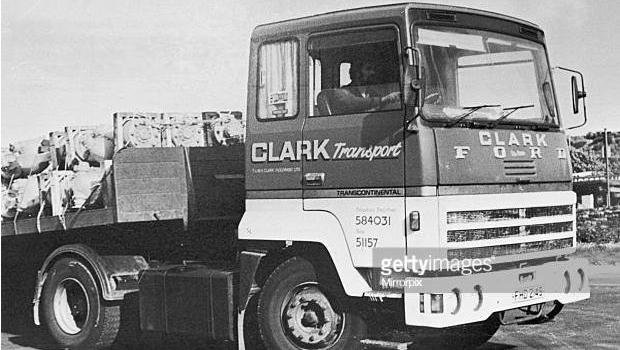
Peter Sutcliffe pictured in his TW Clark lorry, circa 1976
- Did you see Peter Sutcliffe (Image at beginning of the article) or a lorry from TW Clarke (image above) in Scarborough or at any lorry park or transport cafe?
- Did you see Peter Sutcliffe pick up a hitch hiker in his car or his lorry?
- Did Peter Sutcliffe ever offer you a lift in his car or lorry?
- Did you work at Victoria Road, Roscoe Street, Andrews of Scarborough (motorcycle dealers), Deardens builder’s merchants, North Sea Winches D Wray and Sons, Scarborough Ignition Co Ltd or Pickups or the old goods yard which is now Sainsburys?
- Were you a taxi-driver for Boro Taxis next to the café, or did you use taxi’s from there?
- Did you frequent the café in Victoria Road and see Peter Sutcliffe there?
- Did you know the café owner Iris Scott, or see Sutcliffe in her cafe?
If you have any information on the “Nude in the Nettles” mystery that you want to pass on confidentially, you can talk to a journalist by contacting the North Yorks Enquirer using our letters@nyenquirer.uk address. All responses are followed up and will be treated in the strictest confidence.




